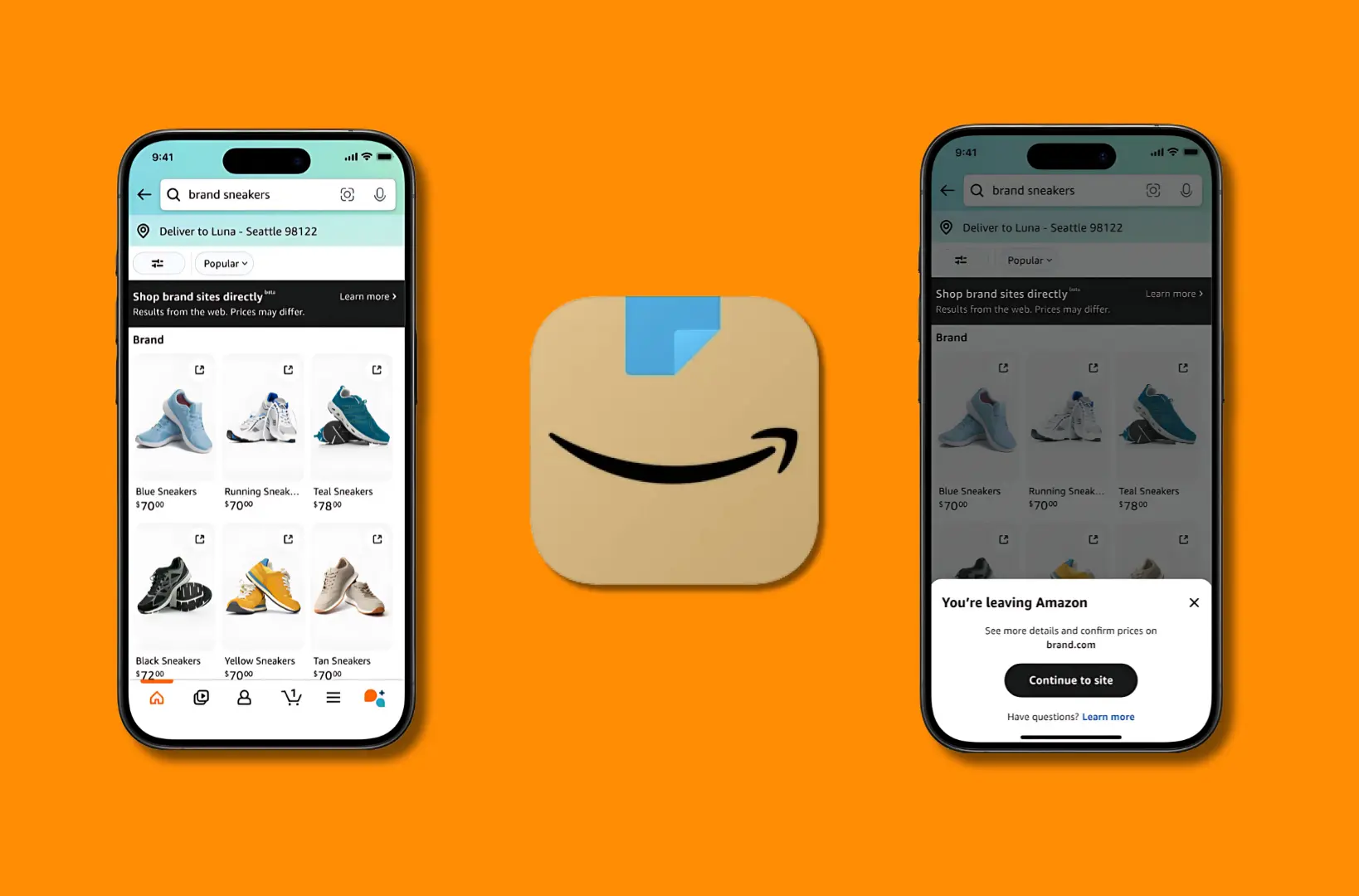Amazon is once again reshaping the e-commerce industry with a bold new move. The retail giant has announced that its app will soon start listing products that Amazon itself does not sell. This shift marks a significant transformation in Amazon’s business model, positioning it more as an aggregator rather than just a traditional online retailer. The implications of this decision extend far beyond Amazon, affecting third-party sellers, consumers, and competitors alike. But why is Amazon making this change, and what does it mean for the future of e-commerce? Let’s dive deeper into this major development.
What’s Changing?
For years, Amazon has dominated the online shopping space by offering a mix of first-party products (items sold and shipped by Amazon) and third-party marketplace listings. However, all these products had to be sold through Amazon’s platform, with Amazon maintaining control over the buying process. Now, Amazon plans to list items from external retailers, meaning products that are neither sold nor fulfilled by Amazon will appear in its search results. Instead of purchasing directly through Amazon, customers will be redirected to external websites to complete their transactions.
This shift turns Amazon into a hybrid shopping search engine, much like Google Shopping. Customers searching for specific products on Amazon’s app may now see results from independent online retailers, specialty stores, and possibly even direct-to-consumer brands that have historically relied on their own websites for sales.
By integrating external listings, Amazon is expanding its role beyond that of a marketplace and into the realm of a universal shopping hub.
While details about how Amazon will curate these listings remain unclear, the potential benefits for consumers include increased variety and access to products that were previously unavailable on Amazon. However, it also raises concerns about quality control, return policies, and the overall shopping experience, since these external retailers may have different service standards than Amazon’s well-oiled fulfillment network.
Why Is Amazon Making This Move?
There are several compelling reasons behind Amazon’s decision to start listing products it doesn’t sell. One of the biggest driving factors is the intensifying competition in the e-commerce landscape. Google Shopping, social media platforms like TikTok and Instagram, and even emerging marketplaces like Temu and Shein have challenged Amazon’s dominance. These platforms have introduced new ways for consumers to discover and purchase products outside of Amazon’s ecosystem.
By listing external products, Amazon ensures that it remains the first place people go when they want to shop online. Even if Amazon doesn’t sell a specific product, it still wants to capture the search traffic and keep users engaged with its platform. This move also aligns with Amazon’s advertising strategy. If external retailers want their listings to be visible, they may have to invest in Amazon Ads, providing a new revenue stream for Amazon.
Another key factor is regulatory pressure. Amazon has faced increasing scrutiny from antitrust regulators, who argue that it prioritizes its own products over third-party sellers. By opening up its platform to external retailers, Amazon may be trying to ease regulatory concerns and present itself as a more open and competitive marketplace. This could help Amazon avoid further legal challenges while still maintaining its dominance in e-commerce.
Additionally, this move could provide Amazon with valuable data on shopping trends outside of its own platform. By tracking user behavior and external transactions, Amazon can gain deeper insights into what people are buying and refine its strategies accordingly. In essence, even if Amazon doesn’t make a direct sale, it still benefits from being the go-to shopping hub.
What This Means for Consumers
For shoppers, this change presents both advantages and potential drawbacks. On the positive side, it expands the range of products available on Amazon. Consumers will no longer be limited to what Amazon or its marketplace sellers offer; they will have access to a broader selection, including niche and specialty items that may not have been previously listed on Amazon. This could be particularly beneficial for those looking for unique products, custom items, or brands that have traditionally avoided selling on Amazon.
However, this shift also introduces some complications. Unlike traditional Amazon purchases, transactions with external retailers may not be covered by Amazon’s customer service policies. This means return policies, shipping times, and customer support experiences could vary significantly. One of Amazon’s biggest strengths has always been its seamless, reliable shopping experience. If customers are directed to external sites with less favorable policies, it could lead to frustration and trust issues.
Another concern is price transparency. Amazon is known for its dynamic pricing model, where prices fluctuate based on demand, competition, and algorithmic adjustments. With external listings, price consistency may become an issue, as customers could see different prices on Amazon compared to the retailer’s actual website. This could create confusion and even lead to instances where consumers feel misled.
Despite these challenges, the convenience of having a single platform to search for virtually any product could outweigh the drawbacks for many users. If Amazon can ensure that external listings maintain a high standard of quality and service, this could be a win-win for both consumers and Amazon itself.
Impact on Third-Party Sellers
For third-party sellers already operating within Amazon’s ecosystem, this change introduces a new layer of competition. Until now, sellers using Amazon’s marketplace had a level playing field, as all transactions were completed within Amazon’s infrastructure. However, with the inclusion of external retailers, sellers may find themselves competing against brands that do not rely on Amazon’s fulfillment services, potentially leading to a more challenging sales environment.
On the flip side, this move could also create new opportunities for sellers. If Amazon allows small businesses and independent retailers to participate in this external listing program, it could enable them to reach a much larger audience without having to pay Amazon’s hefty fulfillment fees. This would provide an alternative route for sellers who have been hesitant to fully commit to Amazon’s marketplace model.
Additionally, Amazon may introduce advertising incentives for third-party sellers to compete with external listings. This could lead to an increased emphasis on Amazon Ads, making paid visibility even more crucial for success. Sellers who strategically invest in advertising and optimize their listings could still maintain a strong presence despite the influx of external competition.
The Future of E-Commerce with Amazon’s New Model
Amazon’s decision to list products it doesn’t sell signals a shift towards a more open and comprehensive shopping platform. This move has the potential to reshape how consumers shop online, positioning Amazon as a universal search engine for products, regardless of where they are sold. If successful, this strategy could help Amazon maintain its dominance in e-commerce while also mitigating regulatory risks and expanding its advertising revenue.
However, the execution will be key. If Amazon fails to ensure a seamless experience between internal and external listings, it could lead to customer dissatisfaction and erosion of trust. Quality control, fraud prevention, and consistent service standards will be crucial factors in determining whether this change enhances or hinders the overall shopping experience.
One thing is certain: Amazon is not just an online store anymore—it is evolving into a global shopping gateway. As the retail landscape continues to shift, businesses and consumers alike will need to adapt to the new era of e-commerce that Amazon is helping to shape.
Suggested Reads:
- Gemini Live Now Available to 500M+ Hindi Speakers
- How to Master B2B Marketing on LinkedIn in 2025
- Nvidia’s Fastest GPUs for DeepSeek AI: Does Speed Really Matter?

Burhan Ahmad is a Senior Content Editor at Technado, with a strong focus on tech, software development, cybersecurity, and digital marketing. He has previously contributed to leading digital platforms, delivering insightful content in these areas.








